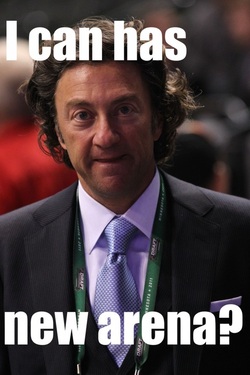 Today the Toronto Globe and Mail reported that Edmonton billionaire Daryl Katz donated nearly half a million dollars to the Alberta Progressive Conservative party prior to the last provincial election. This represents nearly a third of spending for the entire campaign. While election spending rules in Alberta state that no one can donate more than $30,000 to a political party, Katz’s cheque for $430,000 was split into several smaller donations. Katz, owner of the Rexall chain of pharmacies and the Edmonton Oilers is worth an estimated 3 billion dollars. He has recently been in the news over the proposed new arena in Edmonton, to which the province has committed $100 million dollars. Katz has demanded further concessions from the City of Edmonton which could also come from provincial funds for infrastructure. Has Katz’s financial donation to the Conservative party influenced their decision to subsidize the arena? The province says no. Does Katz really need money for the arena, based on his assertion that Edmonton is a small market that can’t afford a fancy facility? The numbers say no. (OK- that isn’t really relevant but makes for some good reading!) Meanwhile the whole topic of campaign spending is big in the United States, where “super PACs” (political action committees that receive or spend more than $1000) work hard to influence the outcome of an election. In the U.S. an individual may donate $2,500 to a candidate, $30,800 to a party and $5,000 to a PAC. The PAC has no limits to spending. In the run up to the 2006 presidential election in the United States to date , 189 super PACs have spent nearly half a billion dollars to promote their agenda- or to denounce the opposition. Federally in Canada, an individual can donate no more than $1,100 to a candidate or political party. Corporations, trade unions, and unincorporated organizations may NOT donate to a political campaign. ( Elections Canada) Most liberal democracies are based on the idea of “one person one vote”, and in theory they give power to the people- not just those with deep pockets. Do unlimited donations lead to corruption? What about economic freedom? Shouldn't you have the right to spend your money to influence others to vote a certain way? Is it possible that massive campaign spending strikes at the very essence of democracy Should there be limits to the amount someone can donate to a political party?
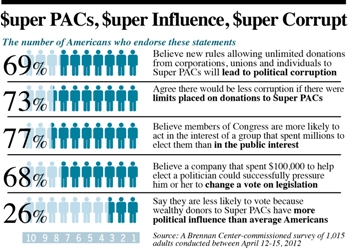
http://www.brennancenter.org/content/election2012
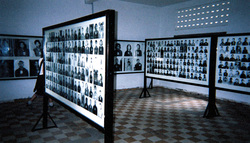 Khmer Rouge Prison, Cambodia, What is the nature of humanity? Why is there torture, genocide, and terrorism in our world? Why do some people delight in tormenting others, as we recently saw in the Amanda Todd case? And is there such a thing as "evil"? If there is, where does it come from and how do we stop it as a society? Evil shows itself in the deliberate act of hurting someone or allowing someone to be hurt. It is describes as immorality or being wrong. Sometimes it is just defined as "the absence of good" or the absence of god, however you perceive that to be. Cambridge professor Simon Baron-Cohen has explored the neuroscience between evil in his book "The Science of Evil." Read an interview with the professor as broadcast on National Public Radio in the U.S. or watch the clip below. His studies have shown that evil sometimes comes from an absence of empathy, or the inability to recognize the feelings of others.
If we accept Edmund Burke's statement that Edmund Burke stated "All that is necessary for the triumph of evil is that good men do nothing," how should we respond to evil? Incarceration? Prevention? The death penalty? No matter where you believe evil comes from, dealing with it comes at the place where the common good intersects with individual rights and freedoms.
In the news this week we read the story of two teenage girls. Both bullied and tormented: one girl dead and the other clinging to life. Amanda Todd of British Columbia took her own life after a string of events led to her public humiliation at the hands of a sexual predator and subsequent acts by her peers over social media. Malala Yousufzai, a fourteen year old youth activist in Pakistan was shot in the head by the Taliban for her much publicized attempts to encourage education for girls. The media has played an important role in both of these cases. Watch Malala Yousufzai in the clip below. This is a girl who is passionate about her rights. A girl whose bravery cannot be ignored. As the clip below shows, her views were broadcast around the world over the media- and for these views, she was shot. She has been flown to Great Britain where there is a good prognosis for her recovery. Malala used the media to promote her views around the world. Most of us think that is a good thing. On the other hand, it was the abuse of social media that contributed to Amanda Todd's death. As a 12 year old girl, she was lured into exposing herself on camera and these images were broadly and anonymously shared to a wide audience, leading to her depression and death. I think everyone believes that is a bad thing. We like to think that girls experience all the same rights and freedoms as boys, but do they? How likely is it that a boy would be shot for his views on education? How likely is it that images of a boy's private parts would be spread over Facebook without it being reported as abuse? One person exerting power over another is what politics is all about. Ideologies were invented to curb the abuse of such power. In our media today, why is more attention paid to one of these girls over the other?
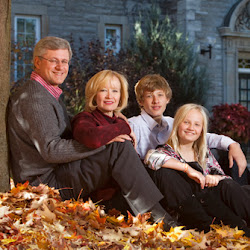 Mr. Harper is the Prime Minister of Canada but you can't vote for him. Even if you are 18 and legally entitled to vote. If you lived in the Calgary Southwest riding, you could have voted for him to be an MP. If you were a card carrying member of the Conservative Party of Canada, and a delegate to their leadership convention, you could have voted for him to be leader of the party. The Prime Minister of Canada is the leader of the federal political party that holds the most seats. We don't vote for our Prime Minister. On November 6, the people of the United States will be electing their president. If you were an eligible American voter, could you vote directly for Obama or Romney? The President of the United States is not directly elected either. He is elected by people named "Presidential Electors" through a process known as the Electoral College. These people pledge to vote for a particular presidential and vice presidential candidate. Electors are appointed by the state legislature through various means, varying from state to state. C Occasionally "faithless electors" vote for different candidates than those they pledged to support. Then the regular voters vote the elector ...and it is the elector who votes for president.
There are many differences between the electoral process in Canada and the United States. Which one do you think is more democratic?
 From the YouTube trailer of the film "Innocence of Muslims." 23 people were killed in violent protests in Pakistan on September 21. On September 22, a Pakistani cabinet minister offered $100, 000 to any one who killed the maker of the film "Innocence of Muslims." Earlier this month there was a one day closure of Canadian embassies in Egypt, Libya and Sudan after violent anti-American protests erupted, sparked by this anti-Muslim film produced in the United States. The protests led a mob to set fire to the U.S. Embassy in Libya on September 11 of this year, killing the American ambassador and three employees. Protests have spread throughout the Middle East, North Africa and parts of Asia. A timeline is provided here by the New York Times. The film begins with Egyptian Muslims burning the homes of Egyptian Christians as security forces stand idly by. NBC describes the film as showing the prophet Muhammad as “a womanizer, a homosexual, and a child abuser,” while critics say the film includes "not a single artistically redeemable aspect.” Muslim filmmaker Kamran Pasha says “it is a film of questionable artistic merit, backed by a group of bitter bigots whose only agenda was to incite hatred and violence.” Actors in the film have publicly stated they were not aware of the intent of the film and their voices have been dubbed over the original words spoken in the film. For many, the reaction to the film is hard to understand. While there is little doubt that the film is disrespectful to Muslims, this degree of violence seems out of proportion to the film itself. Some speculate that the protests are evidence of simmering anger towards the United States and its policies, while others see it as an example of religious extremism. Perhaps Hezbollah chief Hassan Nasrallah is right when he said, “The world does not understand the breadth of the humiliation.” In any event, these protests are a test for the leaders of nations in the Middle East after the Arab Spring, which saw uprisings several nations in the Arab world, leading to regime change in Tunisia, Egypt, Yemen and Libya. The film has only aired once in the United States and was released on YouTube in July. Governments in Pakistan and Bangladesh have blocked access to YouTube after requesting the video be removed, claiming they contain “indecent material.” In addition, the government of Pakistan banned cell phone use in major cities At what point should a government censor or ban materials, either to prevent the spread of hatred, or in the interest of public safety?For more, read al Jazeera's article about freedom of the press and freedom of religion.
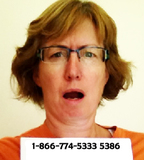 Me! So the other evening I was randomly googling images of myself, (don’t ask why) and what should I find but the photo of another Nicola Ramsey on the South Carolina Mugshot Database. The other Nicola Ramsey lives in South Carolina. The other Nicola was arrested for accepting stolen property. I am not THAT Nicola Ramsey.
 The other Nicola Ramsey But the site got me thinking.
What if I was THAT Nicola Ramsey?
That would have been MY face plastered over the internet in an orange jumpsuit, looking like some kind of convict, when in fact I had not been tried or found guilty.
That would have been ME who would have to pay some unknown and unnamed corporation $99 to have my image removed from their site.
Oh yes, the fine print might say THAT Nicola Ramsey is presumed innocent- but the big print suggests otherwise.
There aren’t any similar websites in Canada, although the Canadian press does publish pictures of people who have been arrested in high profile cases. Governments in Ontario and Alberta maintain galleries of images of people who have failed to provide child support payments. Is that any different? For a commentary on the Alberta Maintenance Enforcement site, see this column from the Calgary Sun. What about “innocent until proven guilty?” What about a person’s right to privacy? Who owns your image anyway? Is it in the public interest to publish photos of people who have been charged with a crime, if they have not been convicted? And how does it relate to the role of government in liberal democracies where elected officials and those who vote for them struggle to find a balance between individual rights and the common good?
|




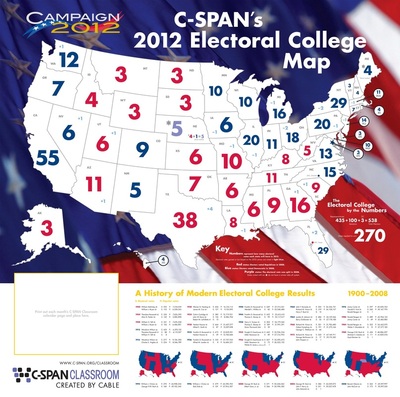



 RSS Feed
RSS Feed